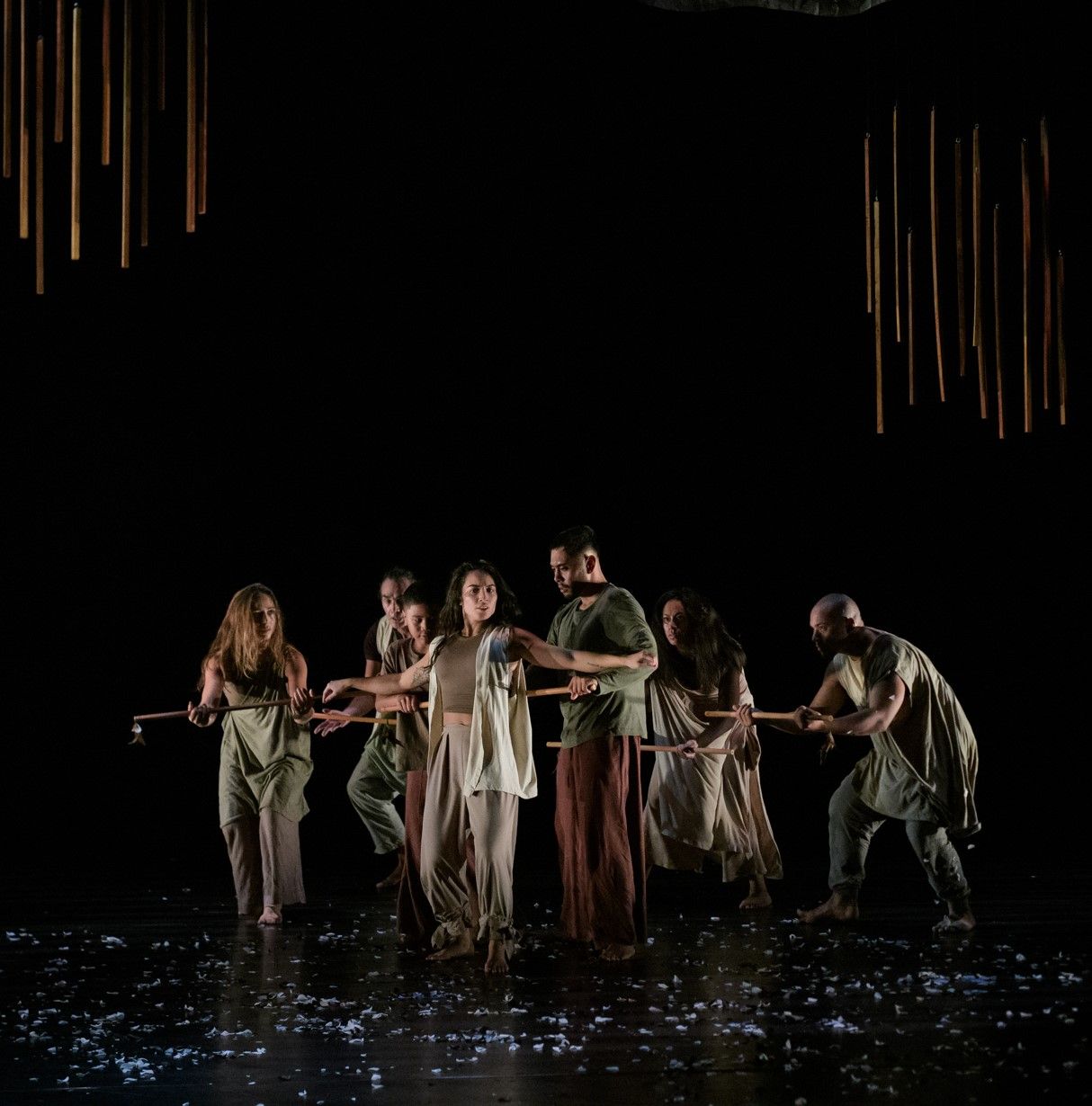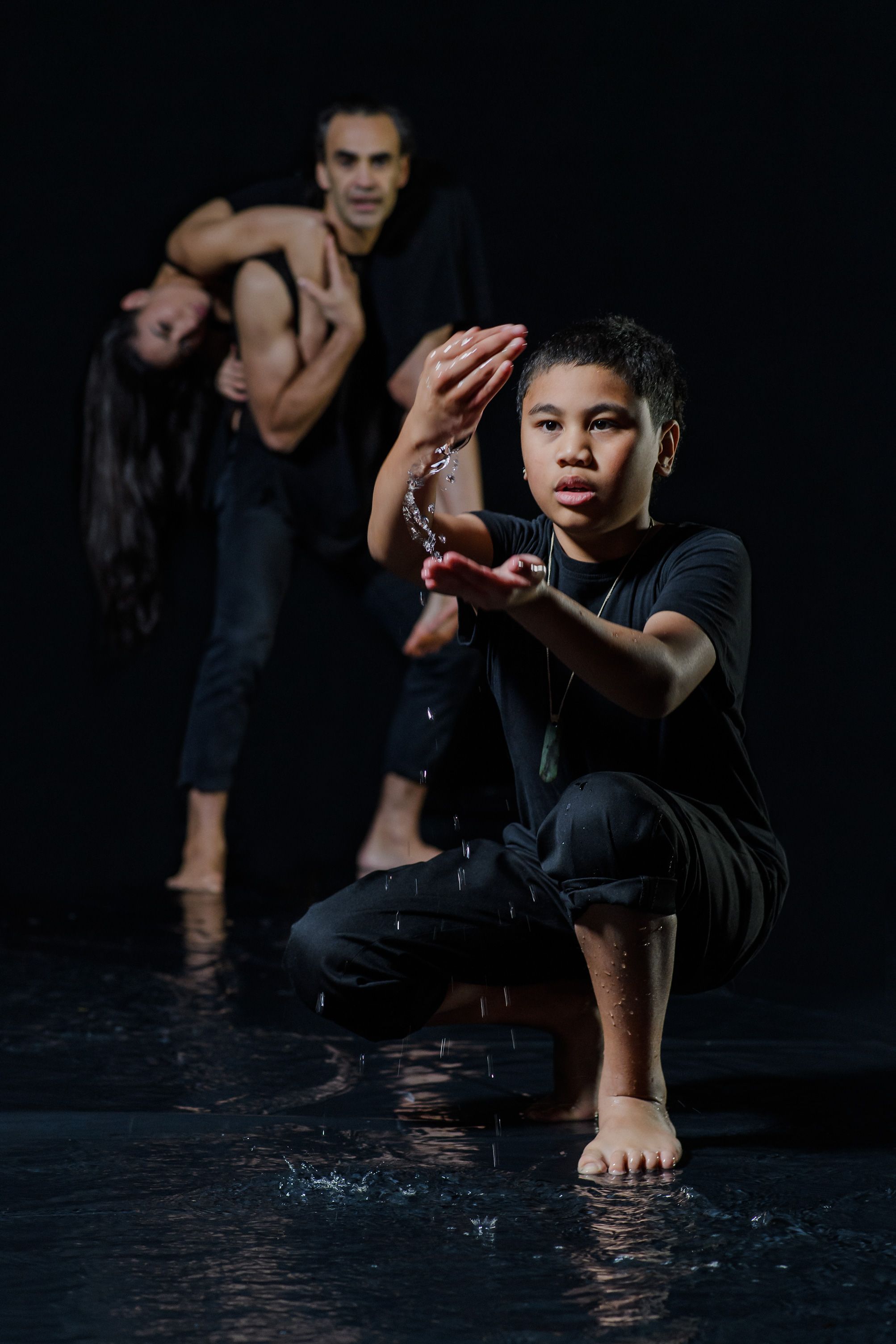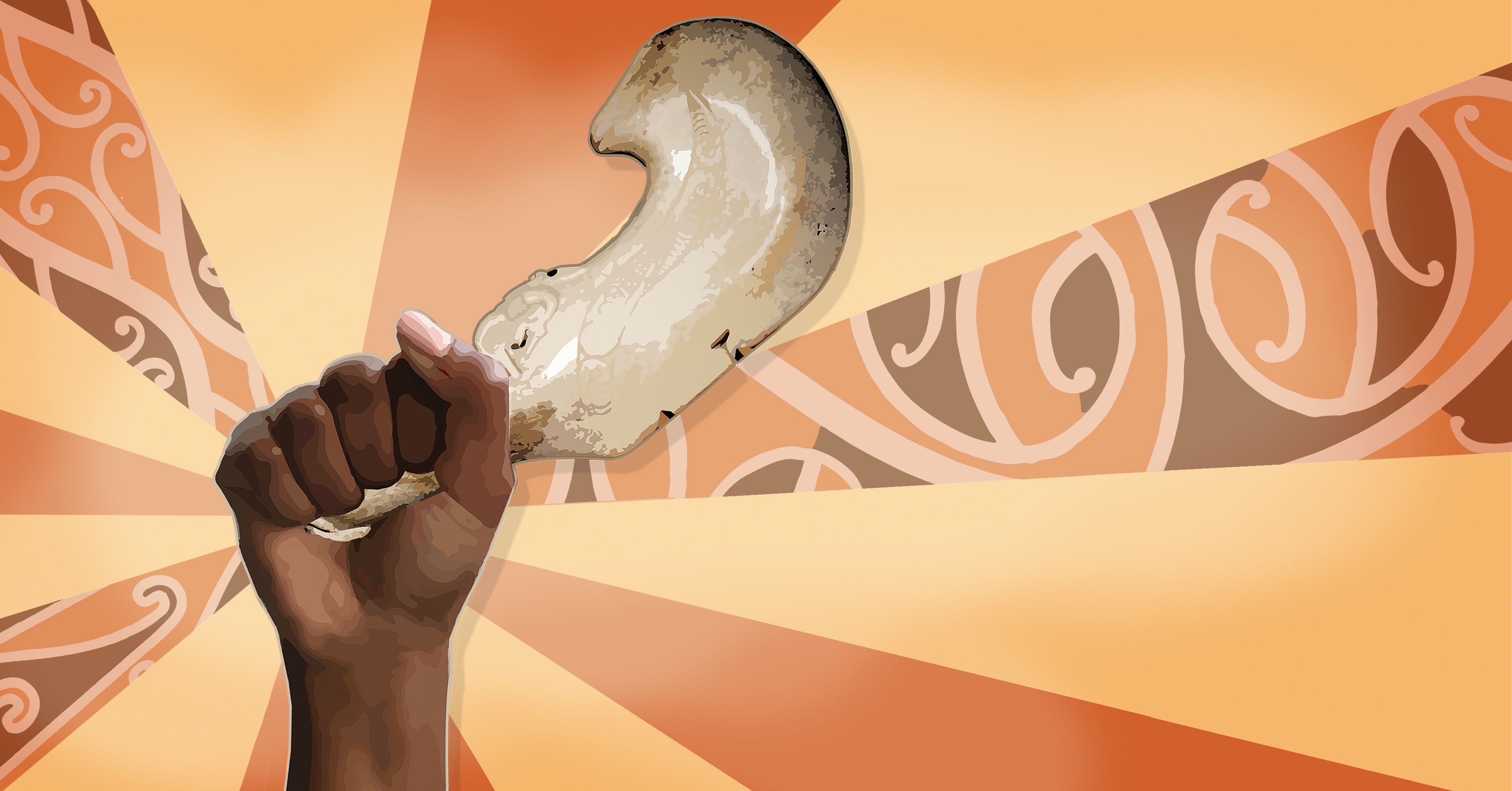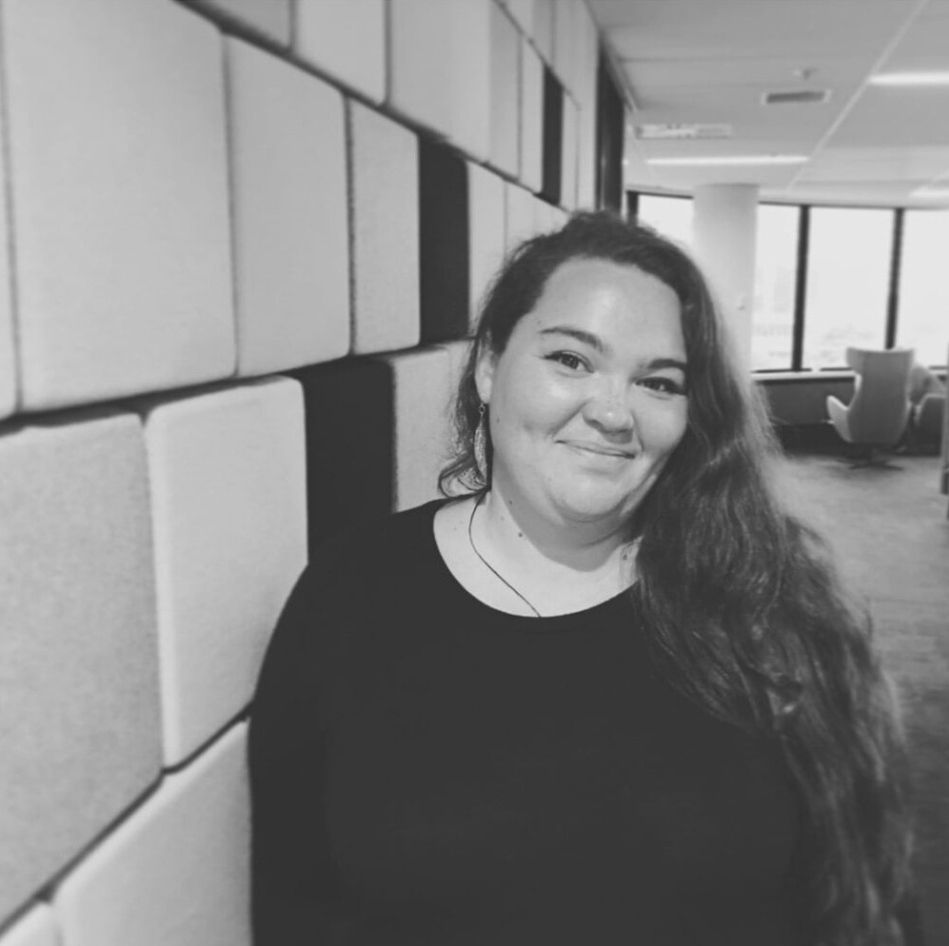Kia Mau, Kia Kaha, Kia Ora
Rangimarie Sophie Jolley reviews three shows from the 2023 Kia Mau Festival.
The city changes when theatre takes over. Something about the streets of Wellington feels more… graceful, like all the stories that sit behind the faces of strangers are suddenly coming to life. Electricity is palpable throughout the cobbled streets of Te Whanganui-a-Tara. The Kia Mau Festival is an unparalleled celebration of Indigenous excellence and creativity that gives the city this energy. With a star-studded line-up of explosive, binary-breaking, culturally nuanced shows, it’s impossible to decide how best to show up during the massive programme.
Fortunately for me, I was able to witness three of the most exciting, thought-provoking performances available. When choosing the shows to cover, decisions were difficult to make – we tried to navigate popularity and accessibility, and avoid anything that might be too triggering.
With every show I saw, I was floored by the accuracy of the storytelling, the sincerity of the performances and the genuine talent in bringing all of these things together to reflect our people, perspectives and magic back to us.
Waiwhakaata
Showing at Circa Theatre, Waiwhakaata was an epically strong start to the programme. The story is about the protagonist’s journey to self-discovery, through returning to his ancestral origins and legacy. It’s a touching, warm, explorative, and at times gruelling, opportunity to witness the very real, acute pain of intergenerational healing. The use of multiple mediums to bring the story to life was extensive – combining contemporary dance, explosive physical theatre, taonga pūoro and kōrero tuku iho.
The central character Rehua, played by dancer Carl Tolentino, is taken on a journey through his whakapapa after suffering the catastrophic effects of oppression in an unforgiving, colonised world. With his humanity hanging in the balance, he finds himself on the cusp of mental and emotional distress, needing salvation in the form of wai.
To guide him, a group of patupaiarehe leads him through ancestral memories attached to his whenua. These moments bring him further back into himself until they end up at the awa where he once played.
Accompanied by his younger self (played by Lezharn Avia-Elliott, one of the most talented rangatahi I’ve ever seen on stage), Rehua and the patupaiarehe reach a moment of spiritual revelation, in which he returns from a state of disconnection to the mahi of his hands – ngā mahi whakairo – which connects him back to his roots.
The use of taonga pūoro was an incredible accompaniment – the renowned artist James Webster, a tohunga of many forms, brought the immersive soundscape to life. Waiwhakaata brought forth the anguish of the protagonist’s pain and gently guided it back into our human hands to hold – using movement as language. It was an absolute must-see, and an amazing opportunity for this Waikato writer to see our stories so beautifully told.
Dancers: Carl Tolentino, Chrissy Kokiri, Sean MacDonald, Brydie Colquhoun, Isope Akau‘ola, Abbie RogersActor: Lezharn Avia-Elliott
Slowing the Sun
The story of Māui slowing down the sun is one of our most well-known pūrākau. It speaks to the pursuits of the ever-curious demi-god Māui and his frustrations with the short journey of Tama-nui-te-rā across the sky – which leaves time only for work in the day and none for play. In many versions of the story, Māui and his brothers conspire at his behest to capture Tama-nui-te-rā and force him to travel more slowly across the sky, thereby elongating the days.
Māui often embodies the characteristics of youthfulness – the spark of life that many rangatahi have that can’t be contained, the endless curiosity for life, the wonder and challenges of humanity.
In this modern retelling, held at BATS Theatre under its auspicious dome, a whānau struggles with the immense challenges facing them – a house that’s falling apart, family members in disagreement and a rangatahi who needs more than what they can provide. With two sisters divided over how to take care of the young tāne’s needs, and a koroua who struggles to bring his daughters together, the whānau have never needed each other more. Yet they’ve never been further apart. The telling of this story is interspersed with the parallel retelling of Māui and his brothers as they conspire to slow down the sun.
Through these stories, the whānau bring issues of climate change, oppression, intergenerational trauma and the power of whakapapa to the forefront. The use of parallel storytelling was engaging, showing the diversity of the cast’s talents alongside the set designer’s foresight in creating a visual tool to signify the two worlds. This storytelling form also served to solidify the characters’ unwavering natures – forcing us to witness the pain caused by the refusal to change despite desperately needing to do so. It was amazing to see a number of local rangatahi in the audience. I hope that many more get to witness this boundary-pushing story in all its colourful glory.
Arawhata
The Queer community is vast – the rainbow doesn’t have enough colours to capture the vibrant strands we embody. From my experience, sometimes being Queer is just a matter of finding your own coloured thread in the vast whāriki of humanity. We exist on a spectrum, each with our own unique experiences and journeys. But what unites us all is our search for acceptance, on individual and collective levels. Arawhata is an immersive, ground-breaking celebration of Queer acceptance that is told boldly and truthfully by performers inhabiting a vast spectrum of Queer Indigenous bodies.
At the Hannah Playhouse, the packed theatre palpated with excitement – the drama of the dark stage, clever use of lighting and large cast of talented Indigenous performers kept the audience in suspense. This is no easy feat for a 90-minute show. The stage was set with three dark platforms at the rear of the space, with strobe lighting and music demonstrating breaks between scenes. Each performer had space to tell their own story, bringing the audience through the trauma, joy and celebration of their gender and/or sexual identities.
The performances explored culture, generations, gender and sexuality through each scene snippet of each cast member – guiding us from the exquisite beauty of traditional dance to the harsh pain of exclusion. The use of traditional Māori and Pacific themes was stunning – poi wielding (shout-out to the long poi – the envy in the room was obvious), soft siva hands and such grace, poise and beauty brought many of us to tears.
Arawhata is an immersive, ground-breaking celebration of Queer acceptance that is told boldly and truthfully by performers inhabiting a vast spectrum of Queer Indigenous bodies.
The crew utilised the space well, shining from the heights of their platforms, dancing, moving and taking shape in ways that only those who have had to relentlessly pursue joy in the face of hate can.
Each portion of the show kept us enraptured in the magic of celebrating Indigenous, Queer expression. We were kept on the edge of our seats, leaning back only to catch our breath between moments of pure beauty or devastating truth. The wielding of drama became completely Queer, because who else could enrapture an audience with the power of overcoming deep, stigmatising trauma, whilst making us completely gold-gilded and green with envy? No one. Literally no one does this type of storytelling more authentically than Queer performers do.
The show was a tribute to the power of Queer culture, and the immense wonder found within the hearts of those of us who are brave enough to be who we are, with our whakapapa in hand and our chosen whānau at our sides. I can’t wait to see what this crew does next.
This piece is presented as part of a partnership with Kia Mau Festival. Kia Mau have supported the costs of paying our writers while we retain all editorial control.






